Pediatric ophthalmology is a specific branch of eye care that focuses on the vision and eye
development of children from infancy through adolescence. It involves comprehensive eye exams, diagnosis,
treatment, and management of various eye conditions that can affect young patients.
Just as children visit pediatricians for their general health, they should also visit an eye
care professional to ensure their vision develops properly. Pediatric eye care professionals are trained to
detect and address vision problems that may impact a child's learning, development, and overall quality
of life.
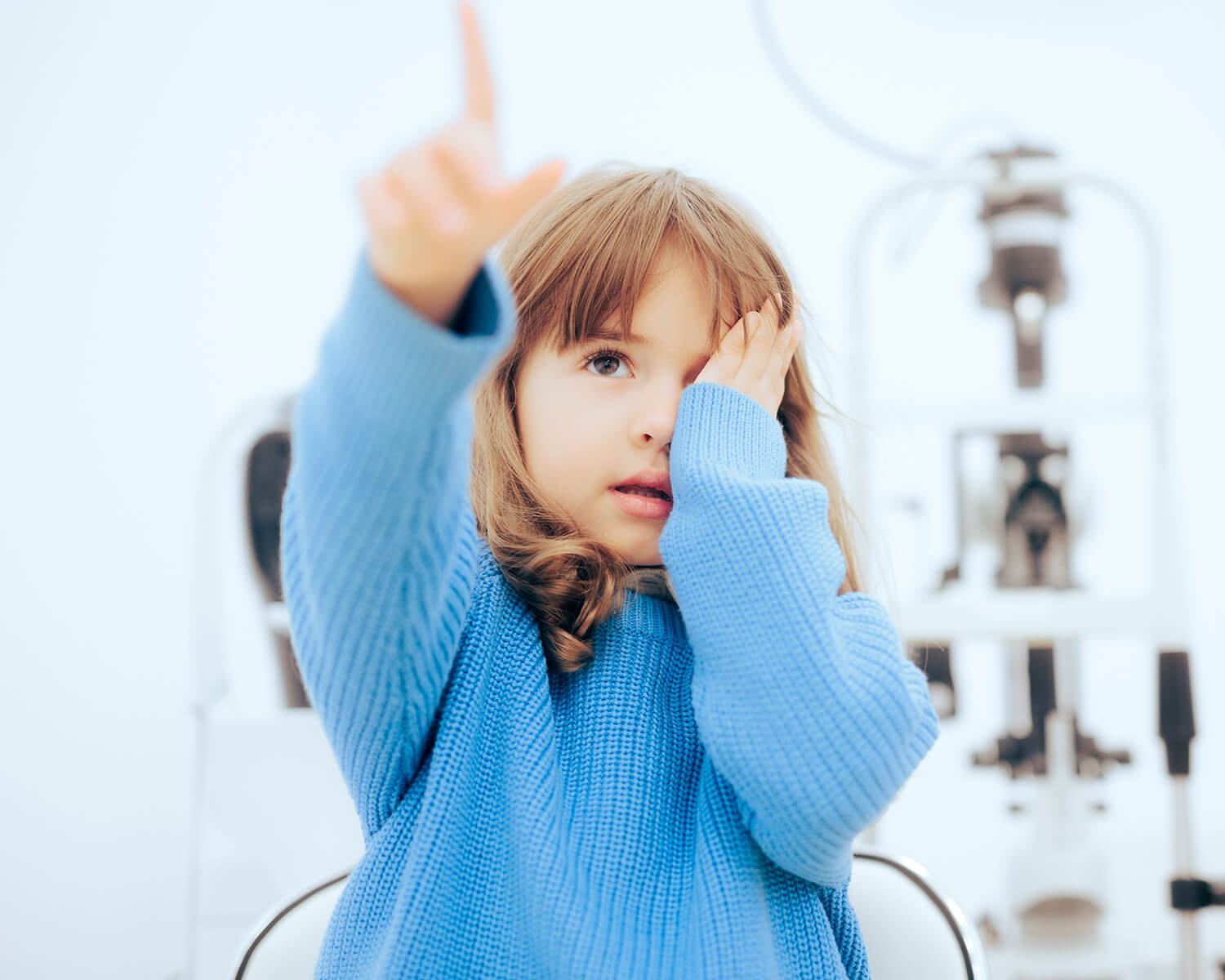

At Raleigh Ophthalmology, your child will receive the most comprehensive eye exam possible using state-of-the-art diagnostic equipment. This allows us to accurately detect eye disease or other abnormalities early, often before they present any symptoms.
Early detection usually leads to treatments that prevent vision loss. Once your child’s eye exam is complete, their test results will be thoroughly explained so you have a complete understanding of their current eye health and vision needs.
Call to Schedule (919) 782-5400During a pediatric eye exam, your child’s Pediatric Specialist will perform a comprehensive evaluation of your child's vision health and eye development. Here's what you and your child can expect during the visit:
This measures how well your child can see at different distances. For older children, this often involves reading letters or numbers from a chart.
Younger children might identify pictures or use a special chart with the letter "E" facing different directions.
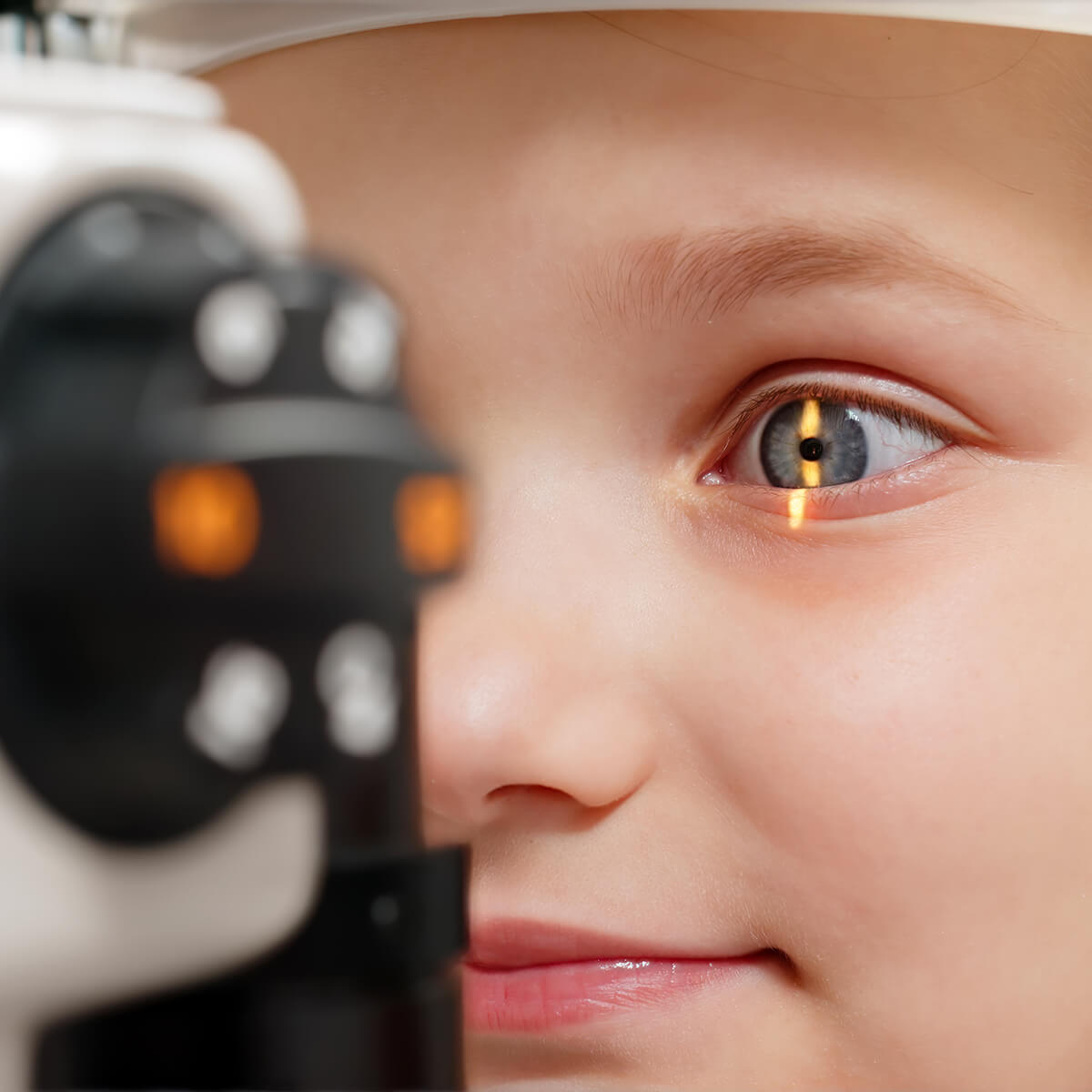
Using special instruments, the Pediatric Specialist will look at the structures of your child's eyes to ensure they're healthy.
The Pediatric Specialist will check if your child's eyes work together properly and move correctly.
These assess how well your child is able to see depth and colors.

Eye drops may be used to dilate your child's pupils. With dilation, the pupils will widen, which allows the Pediatric Specialist to have a better view of the structures at the back of the eye.
Dilation is usually necessary to obtain accurate diagnostic testing to determine if there is a refractive error or need for glasses in children. Dilation will typically last 4-6 hours in children. Sunglasses are provided and recommended for the remainder of the day.
The Pediatric Specialist at Raleigh Ophthalmology have various tools and techniques that they can utilize to help your child participate in the evaluation. Through this, they are able to get a full understanding of your child’s eye health.
The entire exam typically takes about an hour, though it may be longer for younger children or if additional tests are needed. Remember, every child is unique, and the exact procedures may vary based on your child's age, development, and specific needs. Your Pediatric Specialist at Raleigh Ophthalmology will guide you and your child through each step, ensuring a comfortable and positive experience.
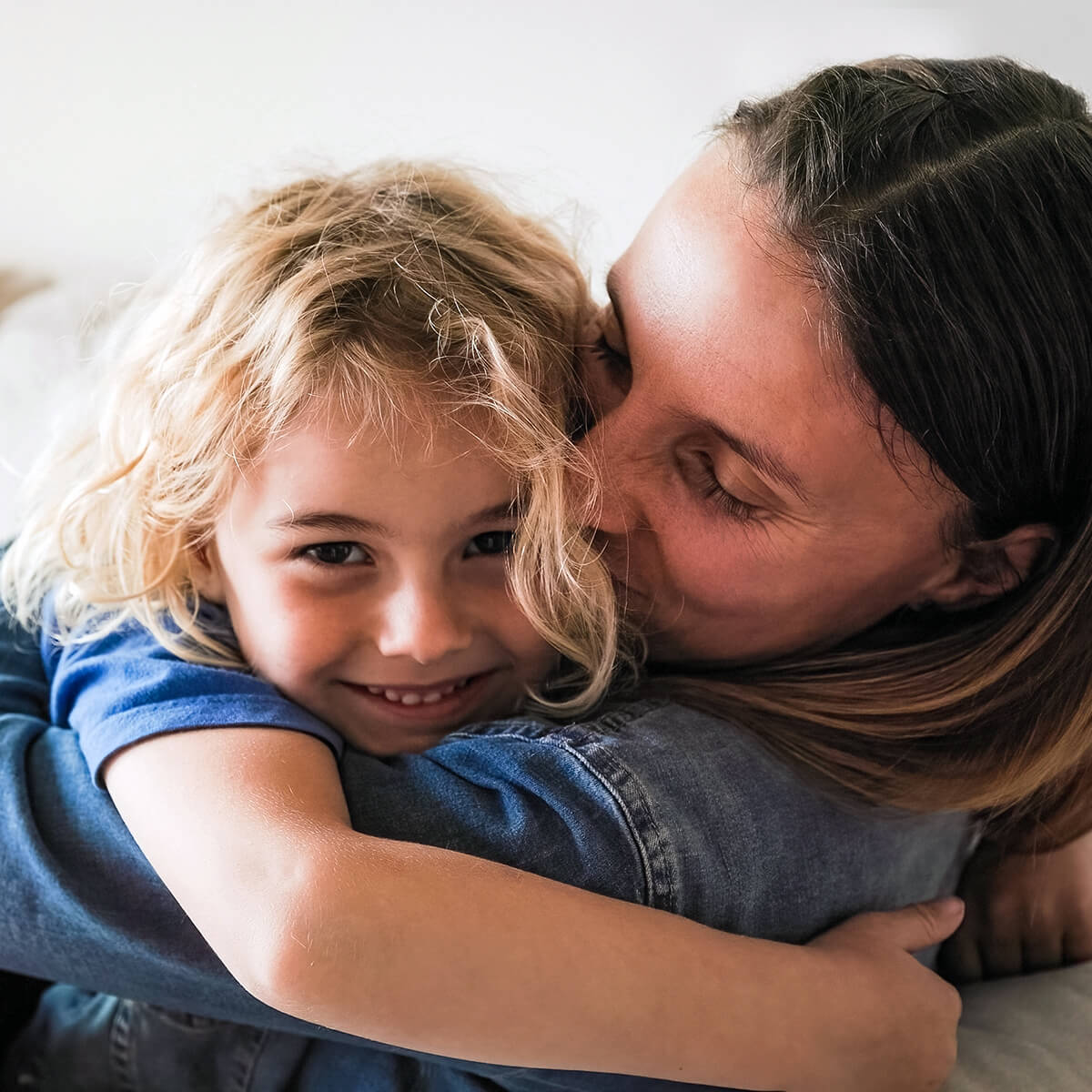
At Raleigh Ophthalmology, our provider specializes in diagnosing and treating a wide range of eye conditions that affect children. We care for all kinds of eye problems in children, from simple vision issues to more complicated conditions, always aiming to help children see their best and keep their eyes healthy.
Refractive errors are common vision problems that occur when the shape of the eye prevents light from focusing directly on the retina. These include nearsightedness, farsightedness, and astigmatism.
In children, these conditions can affect their ability to see clearly at various distances, potentially impacting their learning and daily activities. Our Pediatric Specialist can diagnose these issues through comprehensive eye exams and provide appropriate corrective measures, such as glasses or contact lenses, to ensure your child has clear, comfortable vision.
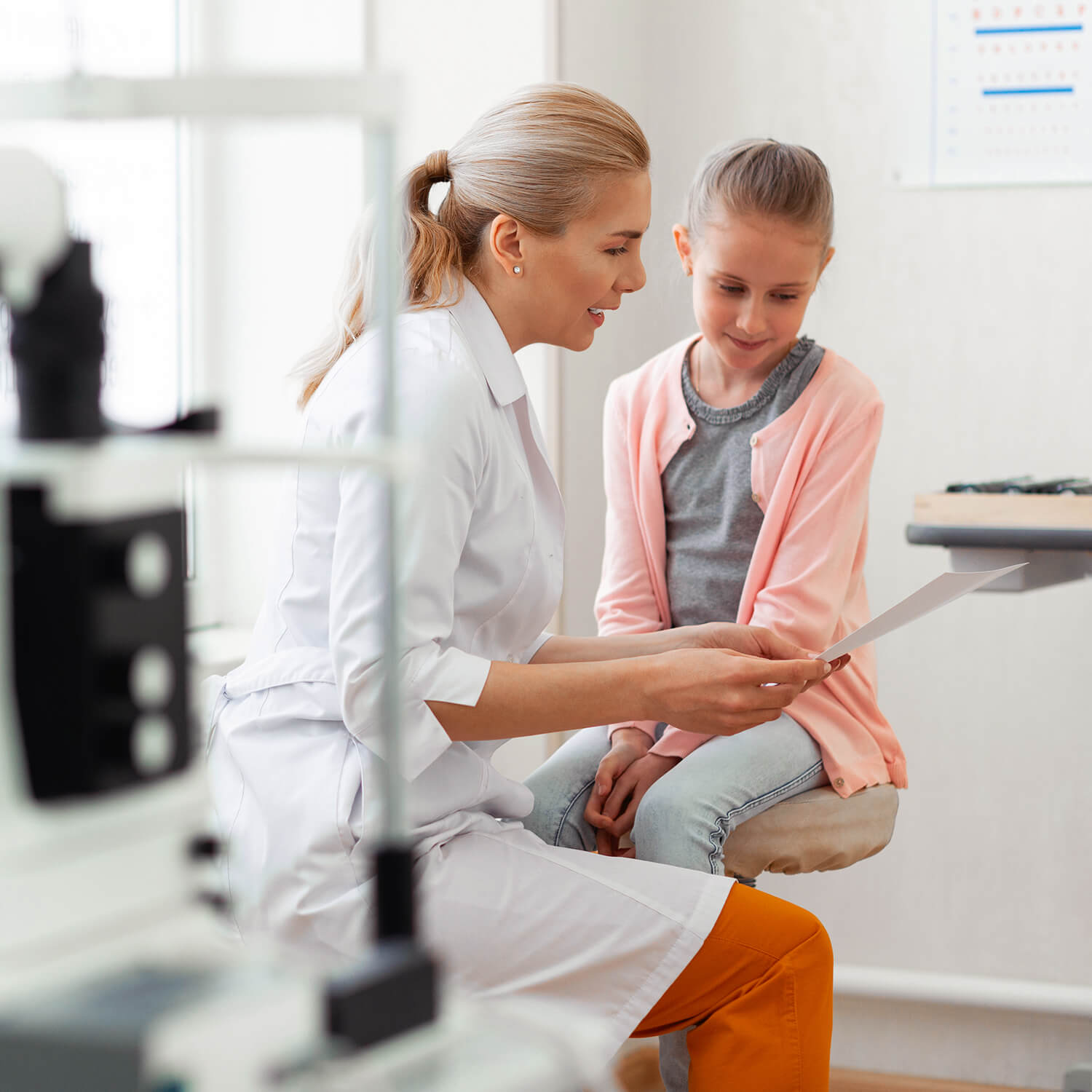
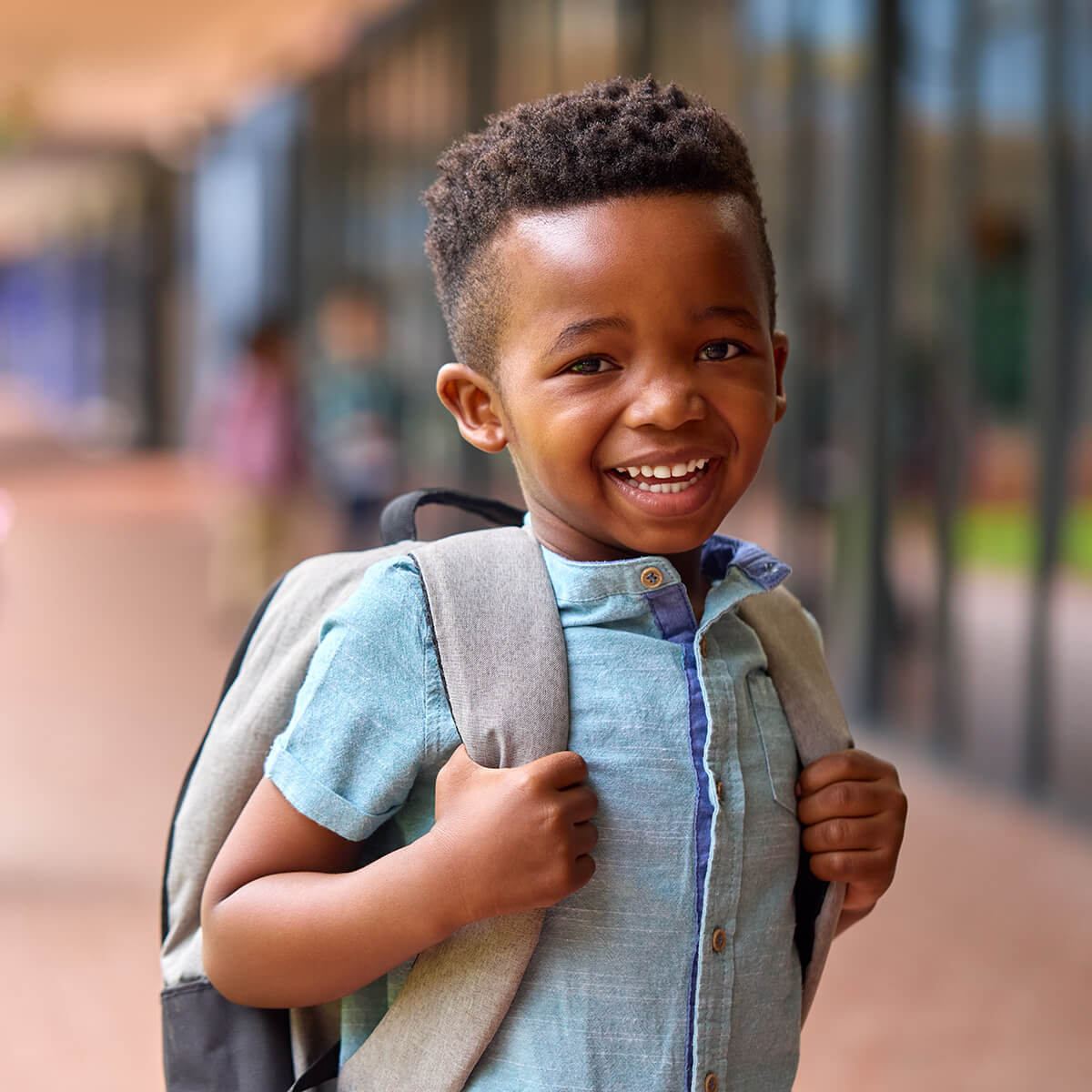
Amblyopia, often called "lazy eye," happens when one eye doesn't see as well as the other. This can occur for several reasons. Sometimes, one eye needs a much stronger prescription than the other, causing the brain to rely more on the better-seeing eye. In other cases, the eyes might not line up properly, making one eye work less.
There are also other eye problems that can cause amblyopia, like cataracts (clouding of the eye's lens) or severely droopy eyelids. These conditions can block or distort vision in one eye, leading the brain to favor the clearer-seeing eye and potentially causing amblyopia if not treated early.
To treat this condition, the Pediatric Specialist often covers the stronger eye with a patch, encouraging the weaker eye to work harder and get stronger. Sometimes, special eye drops are used instead of a patch to temporarily blur the vision in the good eye, which serves the same purpose.

Strabismus is a condition where the eyes don't align properly. Normally, both eyes work together to focus on the same point, allowing you to see a single, clear image. However, in strabismus, one eye looks straight ahead while the other eye turns in a different direction. This misalignment can happen all the time or only sometimes, such as when a person is tired or focusing on something up close.
Strabismus can affect people of all ages, but it's most common in young children. If left untreated, it can lead to other vision problems, including amblyopia or depth perception issues.
Rarely, children can develop more serious eye conditions that affect their vision. These include cataracts, which cloud the eye's natural lens.
While not as common in children, they can significantly impact a child's vision if left untreated. Cataracts in children may be present at birth or develop in early childhood, and they can interfere with the normal development of vision.
Call to Schedule (919) 782-5400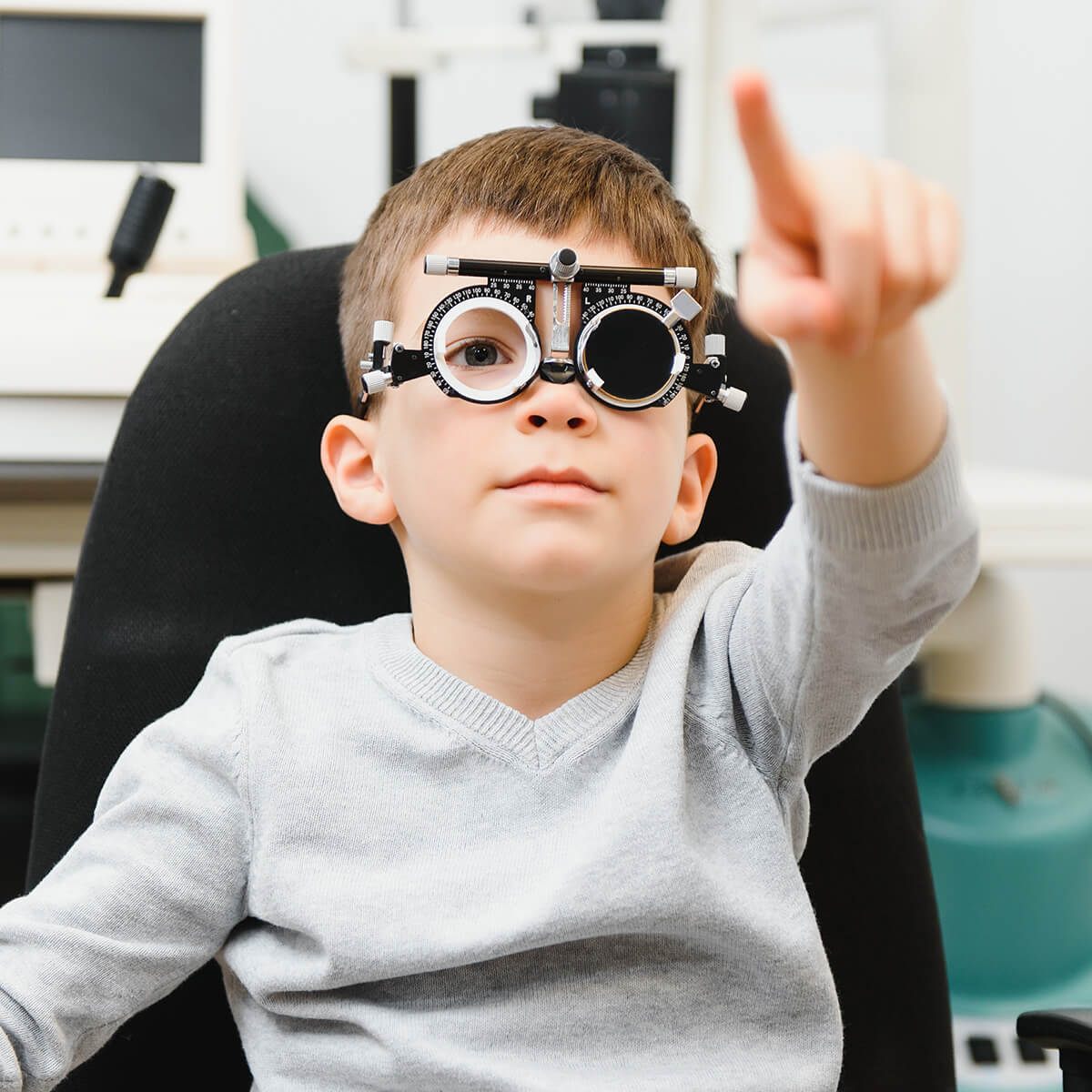
Retinal issues, such as retinopathy of prematurity in premature infants, can affect the light-sensitive tissue at the back of the eye. Our physician does not treat retinopathy of prematurity and a referral may be recommended.
Optic nerve problems, which may be genetic or caused by injury or illness, can disrupt the transmission of visual information from the eye to the brain. Early detection and treatment of these conditions is crucial to preserve and protect a child's vision.